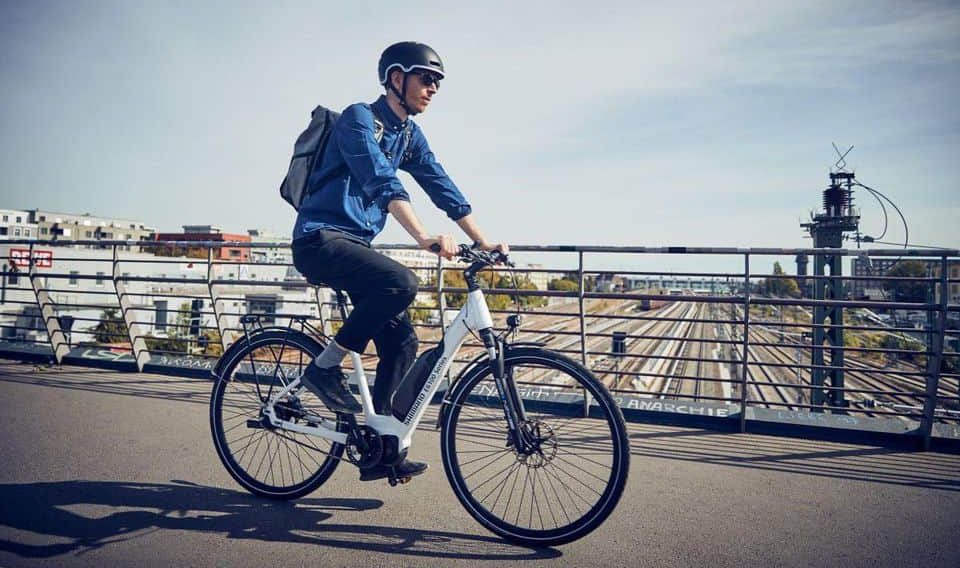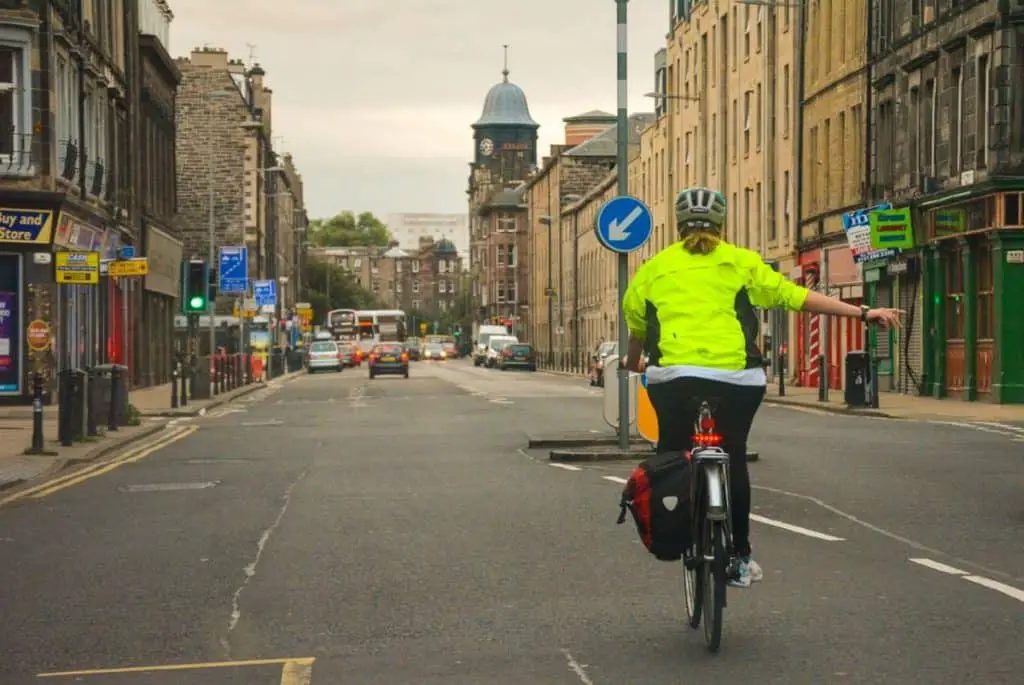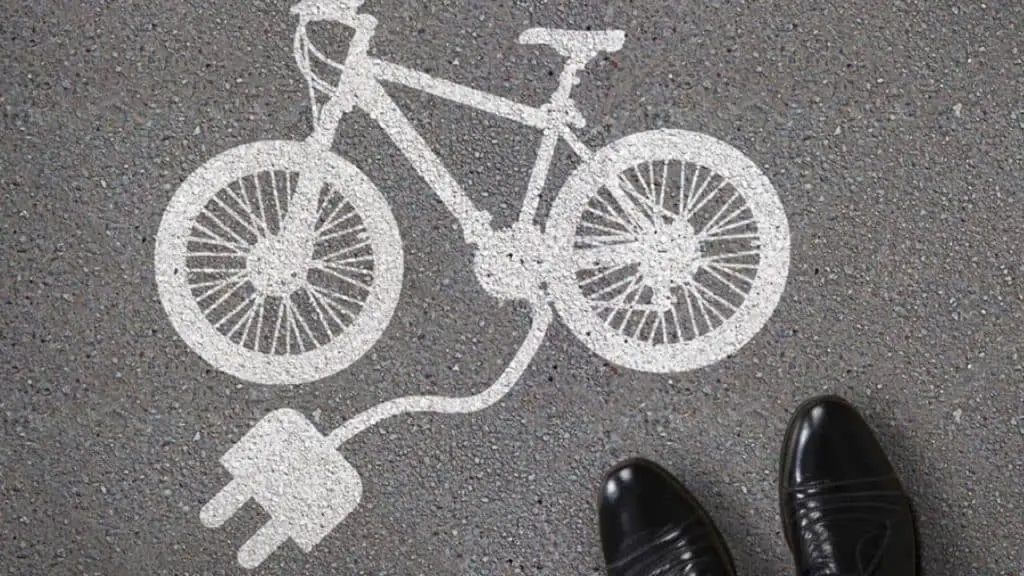Last Updated on July 19, 2023 by Igor Karni

This article will go over the e-Biking rules and regulations that are important for e-Bike riders in the U.K. to know before riding!
Are electric bikes legal in the UK?
Yes, electric bikes are legal in the UK! However, government rules state that there are certain stipulations as to what exactly meets the legal requirements of an e-Bike. Riders should carefully study and understand these requirements before purchasing or using their e-Bike.
In the U.K., electric bikes are classified as “electrically assisted pedal cycles”, or EAPCs. Here is what an EAPC is classified as:
- Must have pedals that can be used to propel it
- The vehicle must show either the power output or the manufacturer of the motor
- The vehicle must show either the battery’s voltage or maximum speed of the bike
- The electric motor must have a maximum power output of 250 watts
- The electric motor should not be able to propel the bike when it’s travelling more than 25 kilometers per hour (15.5 miles per hour)
- EAPCs can have more than 2 wheels (eg. tricycle)
- Vehicle weight limit is 30 kg
The minimum age to ride an EAPC is 14 years.
Keep in mind that if an e-Bike does not meet the EAPC specifications, it may be classed as a motorcycle or a moped, which have a different set of rules and regulations (such as the requirement of a license, registration, and taxes).
Read also: What age to I need to be to ride an electric bike? And, Do I need a license to ride an electric bike?
Difference in rules/regulations between pedal assist and throttle e-bike in the UK
As mentioned before, an e-Bike that falls under the classification of an EAPC must be able to be propelled by human pedaling. An electric bike that does not meet the EAPC rules or which can be propelled without pedaling (such as a “twist and go” throttle e-Bike) must be type-approved and may be subjected to falling under motor vehicle classifications.
As of January 1, 2016, the U.K. laws note that the only throttle e-Bikes that are legal under the EAPC legislation are ones that only give starting assistance, wherein the motor assists the rider without pedaling up to a maximum speed of 6 km/h (3.7 mph). Riders who are pedaling at the same time as using the throttle can still ride up to the pedal-assist limit of 25 km/h.
However, a loophole notes that those who have bought an e-Bike with a full-speed throttle before the date of January 1, 2016, are legally still considered an EAPC and do not require registration or taxes.
Therefore, e-Bike riders can use throttle e-Bikes in the U.K. so long as they meet the EAPC standards highlighted above.
Read also: Top trusted electric bicycle brands in the UK. And, Top specialized e-bike insurance companies in the UK.
Difference in rules/regulations between traditional e-bike and speed e-bike
Speed e-Bikes (also known as S-Pedelecs or Speed Pedelecs) are e-Bikes that have a greater speed capacity than a standard e-Bike. Typically, speed e-Bikes can reach up to 45 km/h (28 miles per hour) and often are equipped with more powerful motors (eg. >250w) to help enable the higher speeds.

As mentioned before, the legal maximum electric motor output allowed in the U.K. is 25 km/h, which means that riders would not benefit from the higher speeds of a speed e-Bike. As well, since the electric motor provides a speed that exceeds 25 km/h, this means that the vehicle would not be classed as an EAPC.
This also means that motor vehicle rules – such as a license, insurance, and registration – may apply to a speed e-Bike instead. In line with this, speed e-Bikes cannot be ridden on cycle paths and must be approved by the Driver and Licensing Agency (DVLA). Speed e-Bikes are also required to pass an annual Ministry of Transport (MOT) test.
With all these factors considered, experts advise e-Bike riders in the U.K. to avoid running into potential issues that may arise from using a speed e-Bike. Since this type of vehicle is not widely popular in the U.K., riders may find it difficult to find an insurer that has a policy that specifically covers the needs and requirements of speed pedelecs.
Therefore, it is likely easier for riders to stick to traditional e-Bikes which fall under the EAPC regulations rather than using a speed e-Bike in the U.K.
Read also: What is the difference between a regular e-bike and a speed e-bike? And, is it legal to derestrict electric bicycle speed?
Difference in regulations by Country or Region
The UK is comprised of four countries/regions: Northern Ireland, Scotland, England, and Wales. Across the board, the rules for e-Bikes apply to all four countries.
For riders in Northern Ireland, however, it may be worth noting that it was not until recently (May 2020) that this region updated its rules to match with the rest of the U.K.
This includes the fact that EAPC owners in Northern Ireland no longer need to register, license, or insure their e-Bikes before using them on public roads, cycle paths, and elsewhere that pedal bikes are allowed. They also do not need to have a driver’s license to ride and do not need to wear a motorcycle helmet while riding their EAPC.
Difference in rules/regulations between traditional (human powered) and electric bikes
If an e-Bike meets EAPC requirements, it is classed as a “normal pedal bike” (traditional bicycle). This means that traditional cycling rules and regulations apply to e-Bike riders.
This includes wearing a secure and fastened cycle helmet that adheres to government regulations, following the appropriate hand signals for the road, riding on the left-hand side of the roadway (eg. riding with traffic flow, not against), using a lit white front light and red rear light when riding at night-time, and more.
For the full list of cycling laws and rules in the U.K., refer to the official government website here.
Need for a license, registration, insurance
For e-Bikes that are classified as EAPC, riders do not need a license to ride, and the e-Bike does not need to be registered or insured nor will it be taxed.
However, if your e-Bike doesn’t meet the EAPC regulations, such as if the motor exceeds 250W or if the power output exceeds the speed of 25 km/h, it will need to be registered, insured, and taxed as a motor vehicle, and a driver’s license will be required.

What types of roads/paths one can ride an e-bike on in the U.K.
As stated before, if your e-Bike meets the EAPC requirements it is legally classed as a normal pedal bike.
This means that riders can use their e-Bikes on traditional cycle paths and anywhere else pedal bikes are allowed and are similarly prohibited from riding in any area that expressly prohibits traditional bikes (a major example of where cycles are prohibited are sidewalks/footpaths).
Read also: Check out best UK travel destinations by electric bike.
For pedal bikes (both traditional and electric), using cycle lanes is not mandatory, but may be the safer option for riders. Cyclists are also allowed to use lanes shared by bikes and pedestrians, but if it is expressly segregated, riders must stay to the side that is intended for cyclists.
If a rider wants to use their e-Bike on a public highway, they will need to register the e-Bike with the Driver and Licensing Agency (DVLA), will be required to wear a motorcycle helmet, and will require a license and insurance.
A few words in conclusion
As you can see, the rules for e-Bikes in the U.K. are fairly straightforward and universal across all four countries. To avoid any hindrances or headaches such as requiring insurance, licenses, or tax, be sure that you purchase/use an e-Bike that fits into the EAPC standards, meeting standards such as the 25 km/h motor output speed limit and having a motor that does not exceed 250W.
Once you ensure that your e-Bike matches the regulations of the EAPC standards, you are good to go!
Read also: Best e-bike financing options in the UK. And, Top trusted electric bike brands in the UK. And, Top specialized e-bike insurance companies in the UK.
Igor is a sustainable mobility and green energy advocate. His mission for Easy E-biking is to help make electric cycling simple, practical, and fun. Follow him on Facebook and LinkedIn.





